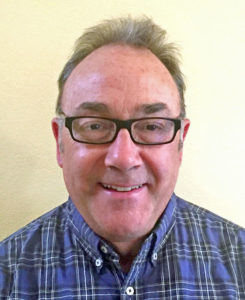By Catarina Kidd, AICP
 Duncan Watry, AICP, is Manager for Planning of the New Transbay Rail Crossing project at Bay Area Rapid Transit (BART). He holds a master’s in geography from San Francisco State University and a BA in English from UC Berkeley.
Duncan Watry, AICP, is Manager for Planning of the New Transbay Rail Crossing project at Bay Area Rapid Transit (BART). He holds a master’s in geography from San Francisco State University and a BA in English from UC Berkeley.
Please expand on your main project, the New Transbay Rail Crossing.
BART and the Capitol Corridor Joint Powers Authority (CCJPA) are cosponsoring this effort to plan and build new rail connections from the East Bay to San Francisco, including a new line for BART in San Francisco. CCJPA is a partnership among the six local transit agencies that co-administer and manage transit services in the eight counties of the Capitol Corridor.
We expect this project to be transformational for the Bay Area, as it will increase the BART system’s capacity and potentially create a new regional rail network connecting major markets in this mega-region of 21 northern California counties. We expect the effort will result in better coordination of services among multiple rail agencies and more convenient connections for riders, all as envisioned in the California State Rail Plan.
Have you determined the geography and scope?
Our next steps are to engage the public, undertake a market demand analysis, and bring aboard modeling consultants. Based on the results of the market analysis, we’ll develop program alternatives. Ultimately, if it gets funded, this will be the largest transit public works project in the Bay Area since planning began for the original BART system in 1957.
What are you proposing for BART’s core capacity?
Core capacity is about increasing the ability of BART to operate more trains through the Transbay Tube. The current limit is 23 trains per hour. Before Covid-19, BART was running full trains at that limit. To increase Transbay capacity by about 45 percent, we will buy a new train control system and new rail cars, and build a new yard in Hayward to store and maintain the cars.
We also have to build more electric power substations, as the added trains will draw more power. This is all bundled into the core capacity project, the planning for which took six years. To fund these improvements, BART’s project is in the Federal Transit Administration’s (FTA) capital investment grant program — the highest rated, large transit project in the country meeting FTA’s evaluation criteria. We believe we are less than a month away from getting a full funding grant agreement for these improvements.
How has the pandemic reduced demand for future transit?
This is the big question all around the country. Large capital projects take 10-30 years or more. We are thinking long-term and pushing ahead.
Where did you work before BART?
I was senior planner at URS/AECOM for about four years. Prior to that, I was manager of capital planning at SF Muni, working on long-range planning and for the Metro Transit Commission. I began my career at Muni in the service planning group, which managed daily operations — changes to bus routes and stops, working with traffic engineers on signal timing, and so forth — everything you see on the street.
What are you doing about the social justice aspect of transit planning?
Social justice is an essential focus. A lot of capital projects in the past have damaged neighborhoods adjacent to improvement projects, particularly in minority communities. We must be conscientious about hearing from all members of the community. Equity must be addressed up front so it becomes the primary decision-making consideration in how these communities are served by transit.
How do you handle criticism from the public?
First, do the detailed work up front so that everyone on staff has their facts straight. This requires talking with and listening to people, taking their input seriously, and using it to improve projects. Ultimately, we are building something the public both needs and can use, but you can never make everyone happy. Someone will always think they have a better idea, or unexpected things happen. So you aim for the fewest negative impacts and greatest number of benefits.
What advice do you have for success in planning?
Learn and understand what goes into daily operations. When you work for an agency, planning at a high level, it is good to know how stuff actually happens on the ground.
I started my career at Greyhound, selling bus tickets, dispatching drivers and maintenance personnel, and scheduling. The greatest plans will fail if operations can’t make it work. Get experience in the operating world early. In my case, it was “How do you get buses on the street? Where are the stops? How will they make those turns?” When you know those details, it makes your job as a planner easier because you will be able talk with the people who make things work. They will see that you understand how things happen, and they will be more comfortable with your plan and trust your planning.


 Interviewer Catarina Kidd, AICP, is senior development manager at FivePoint and a guest writer for Northern News. All interviews are edited.
Interviewer Catarina Kidd, AICP, is senior development manager at FivePoint and a guest writer for Northern News. All interviews are edited.